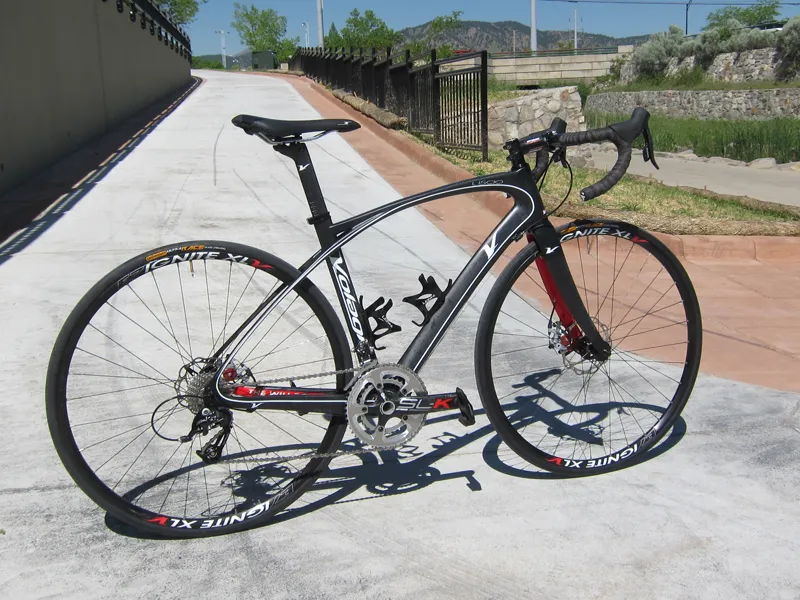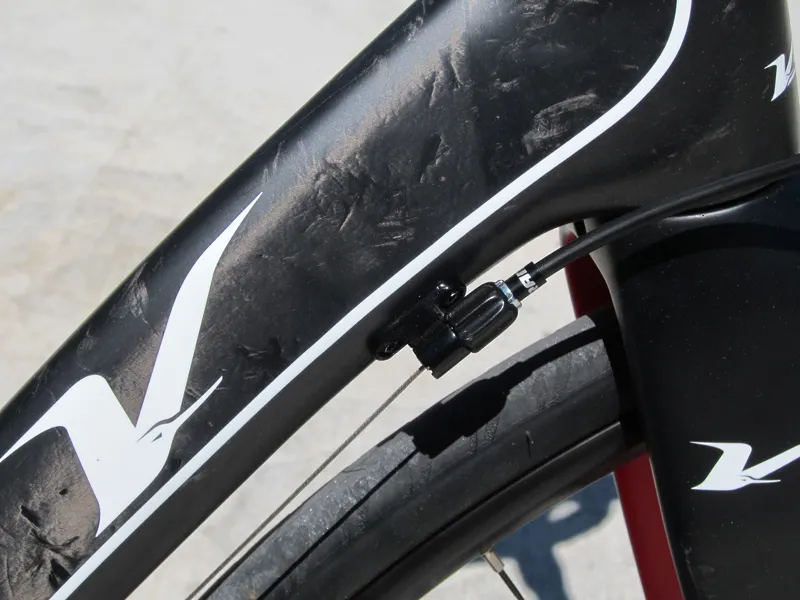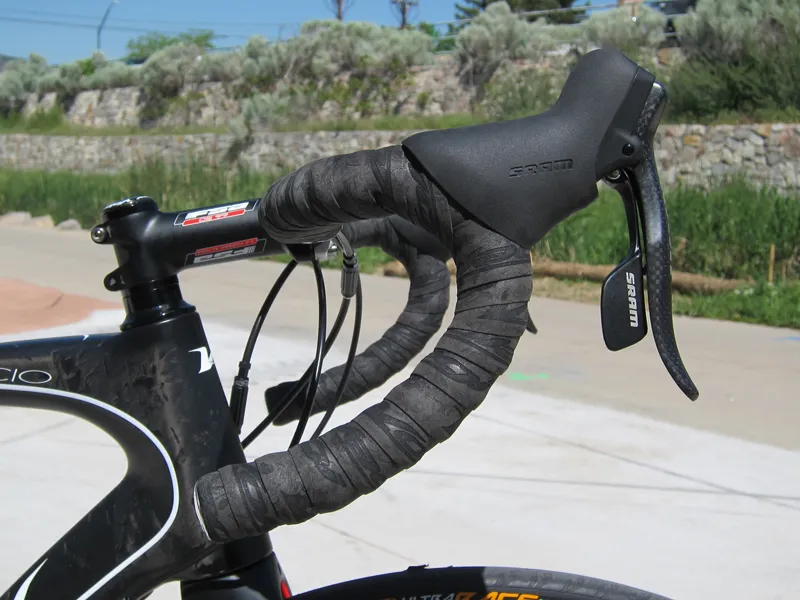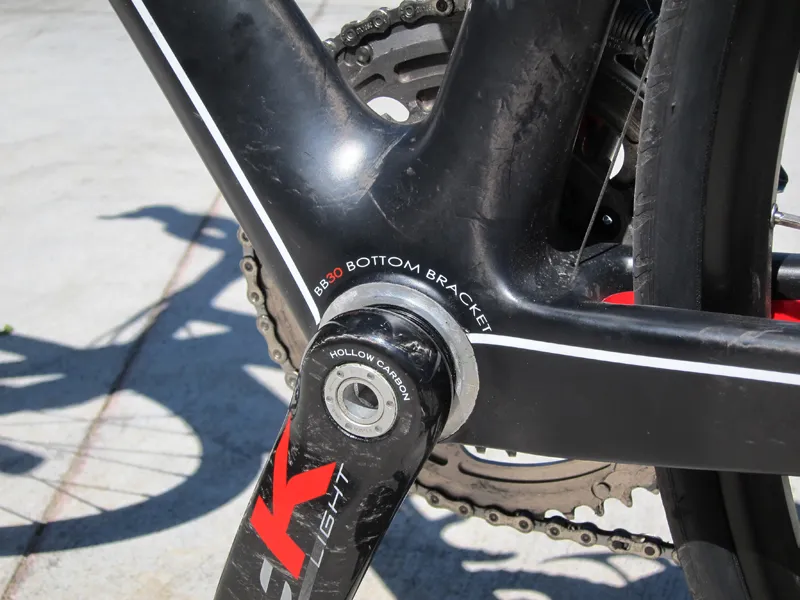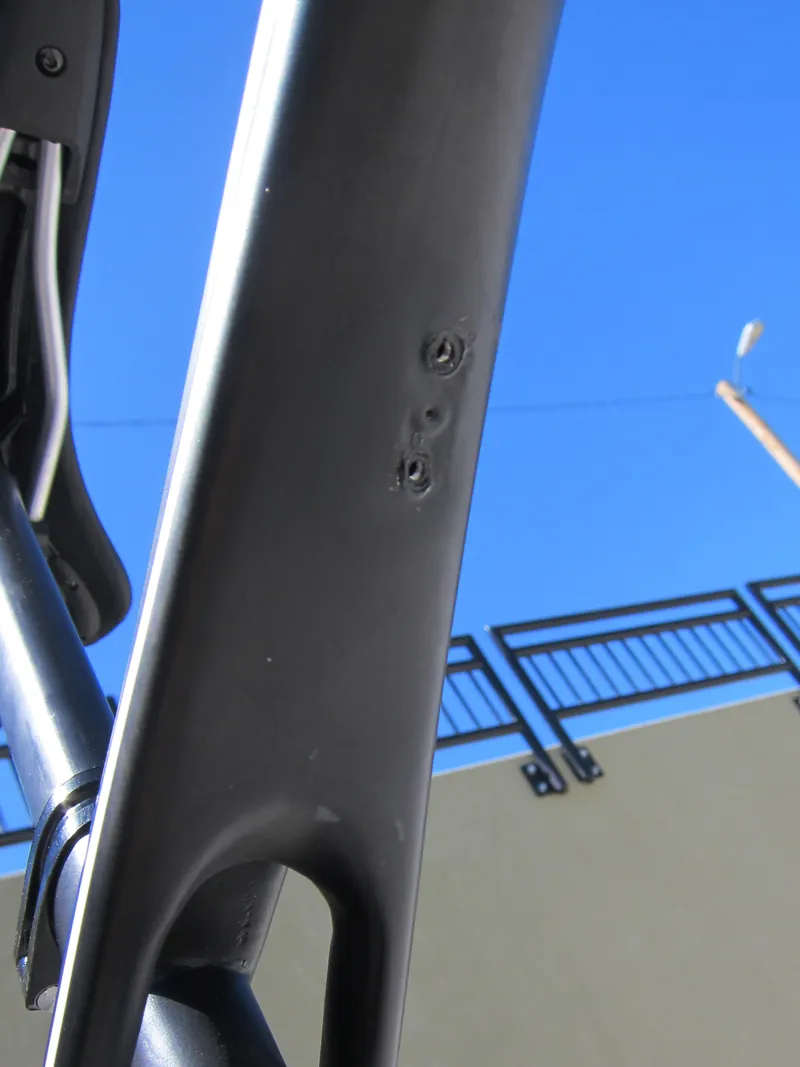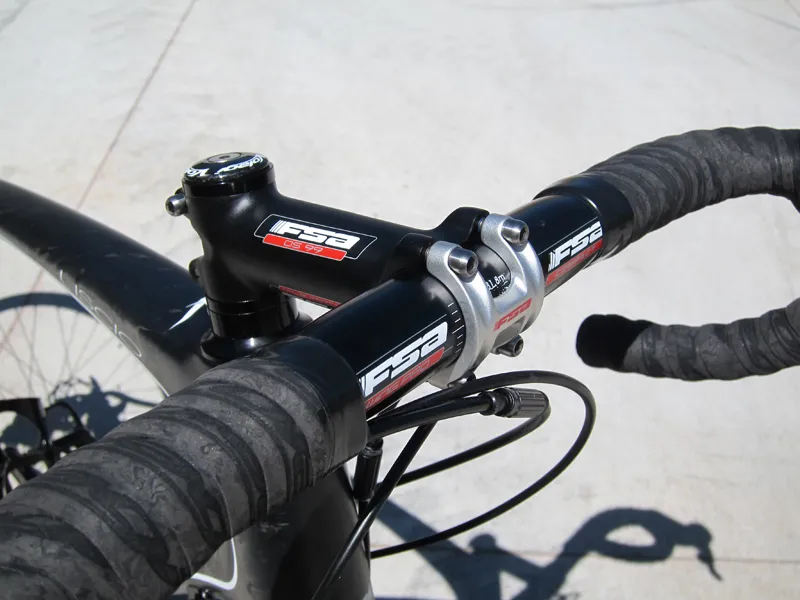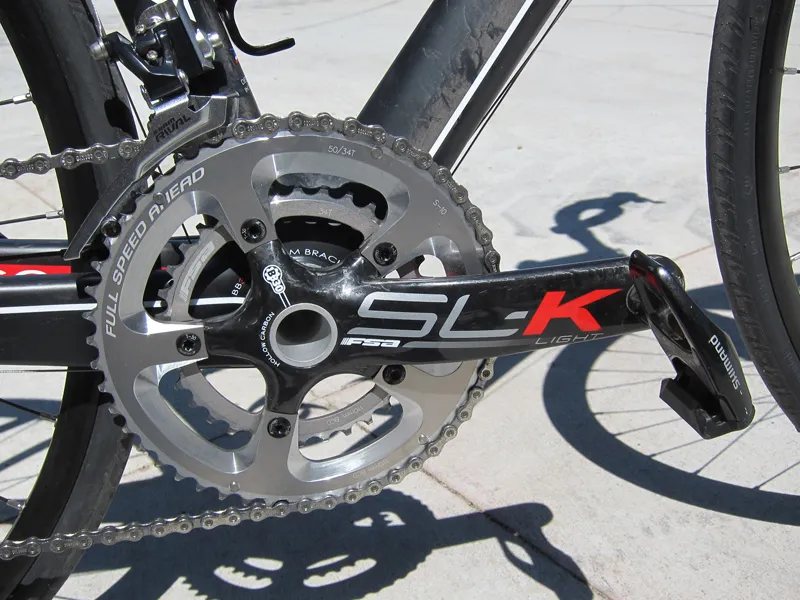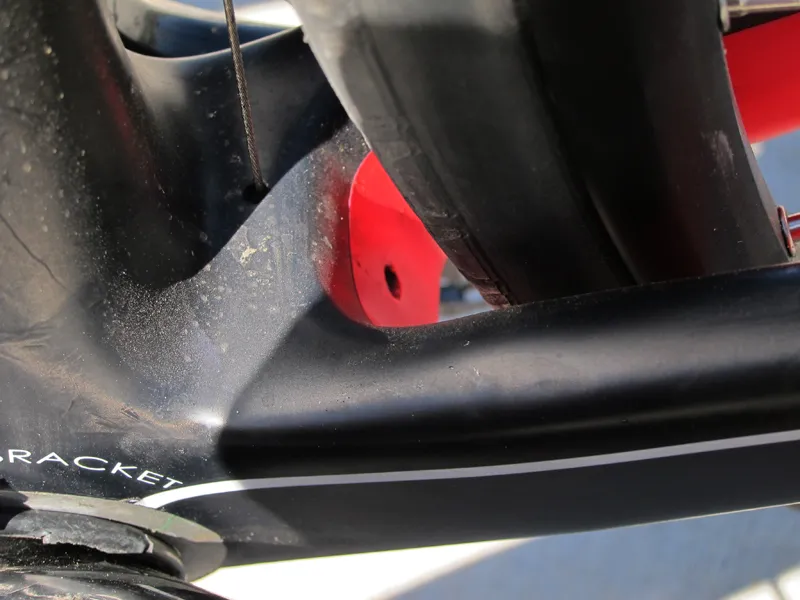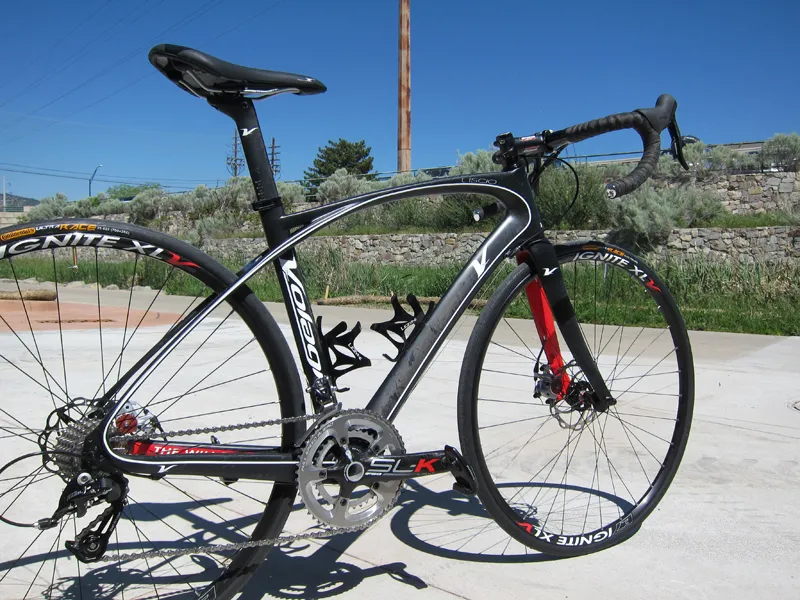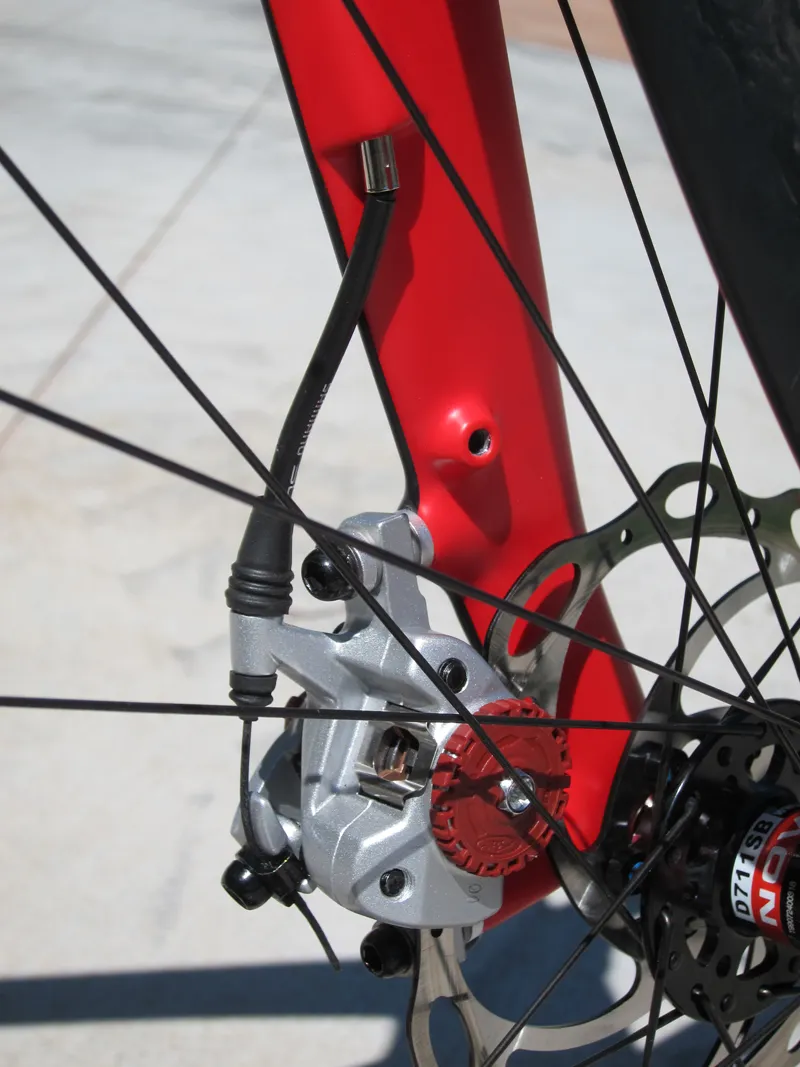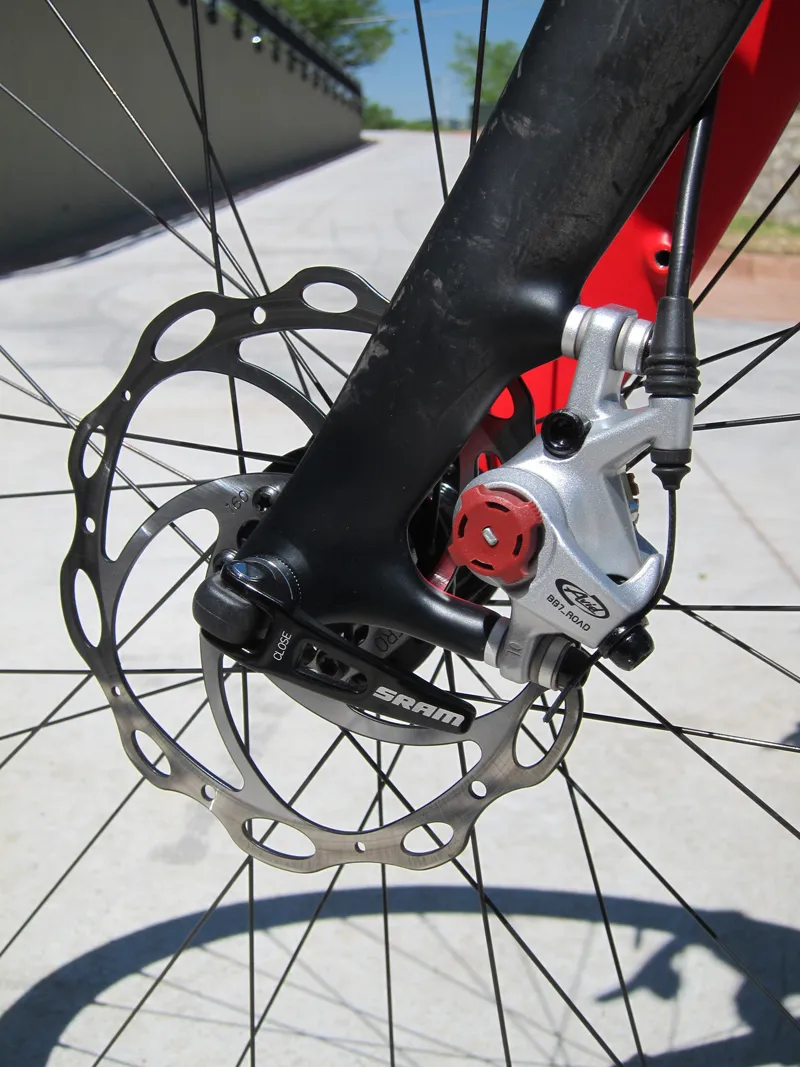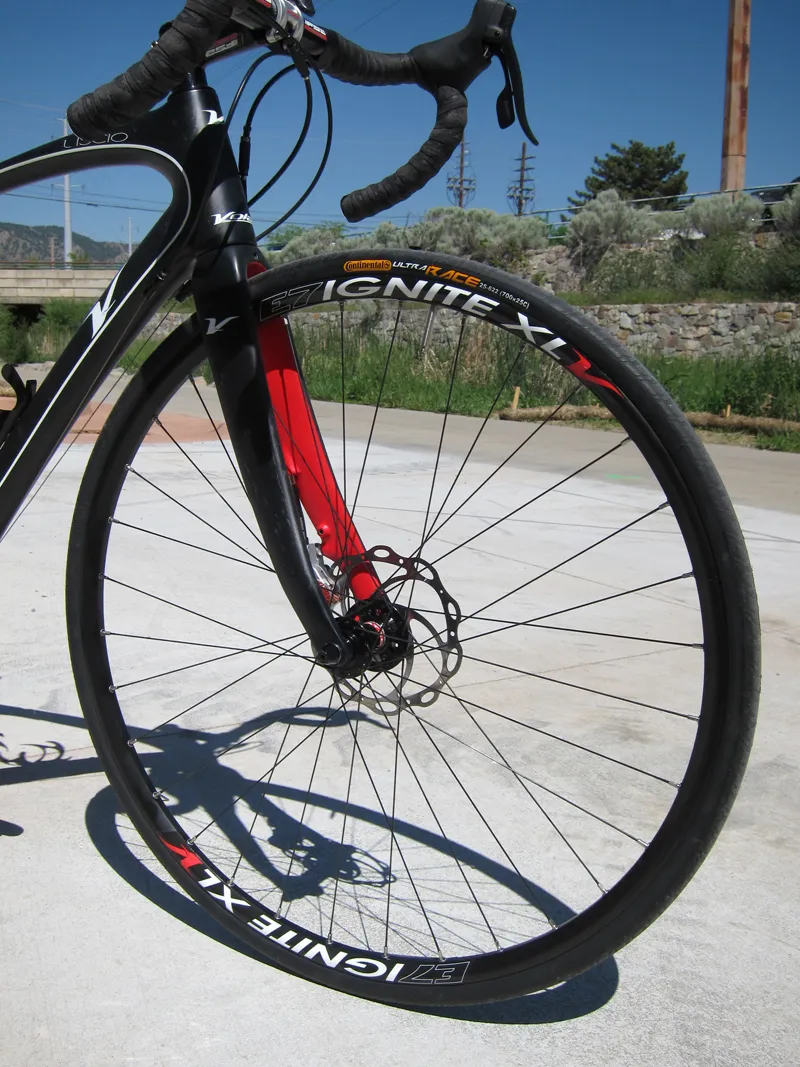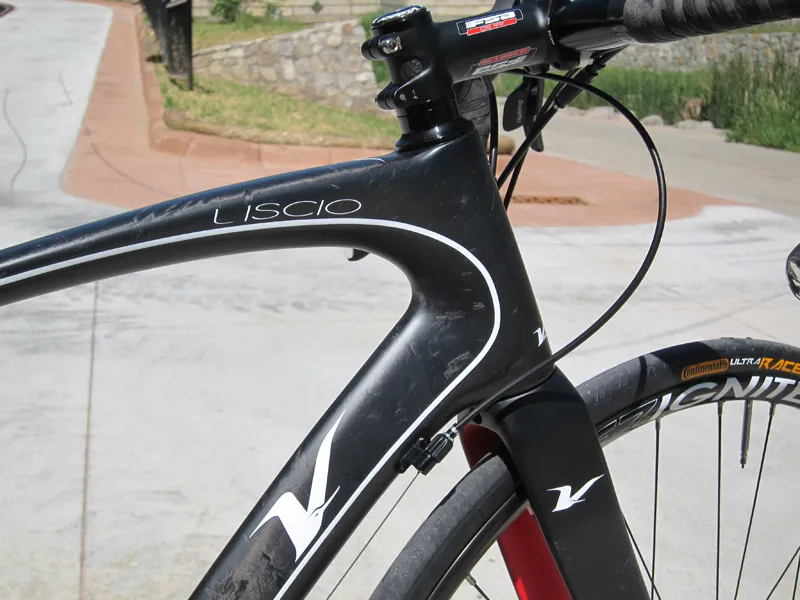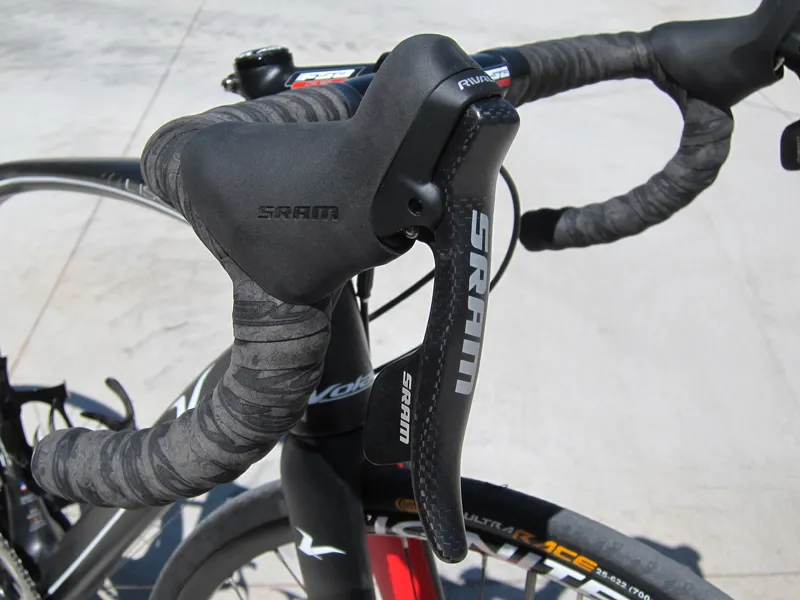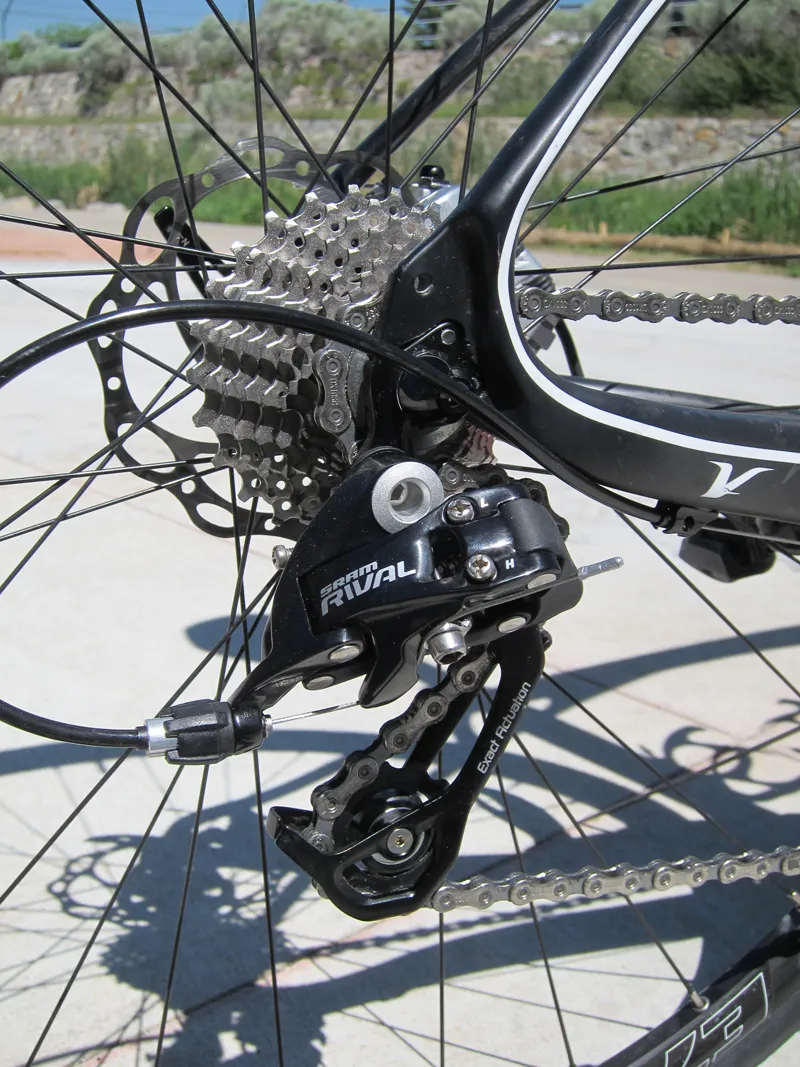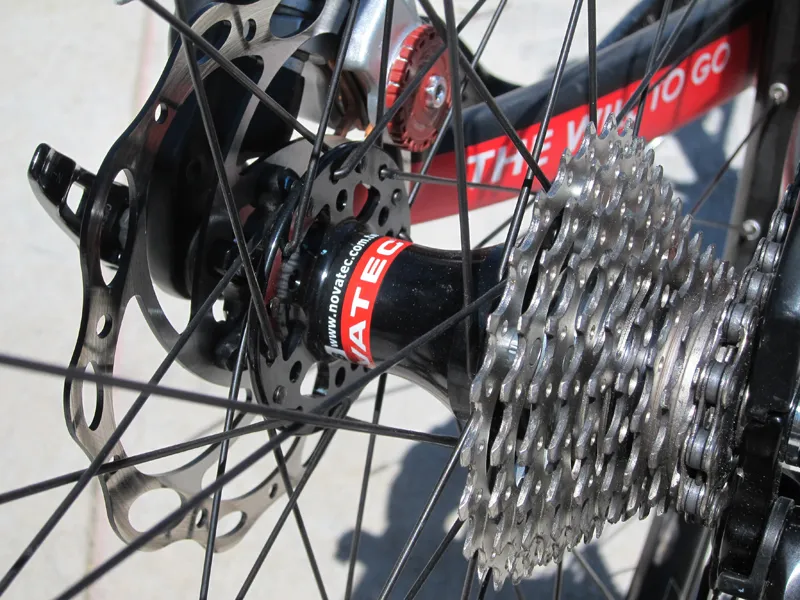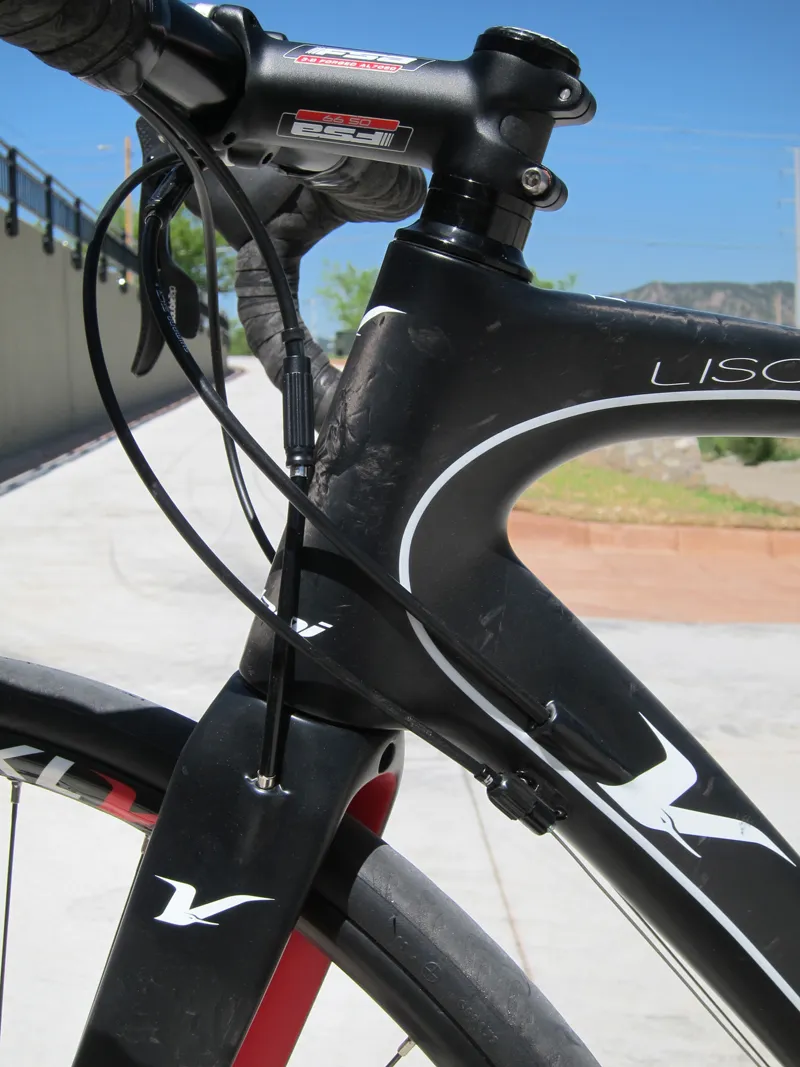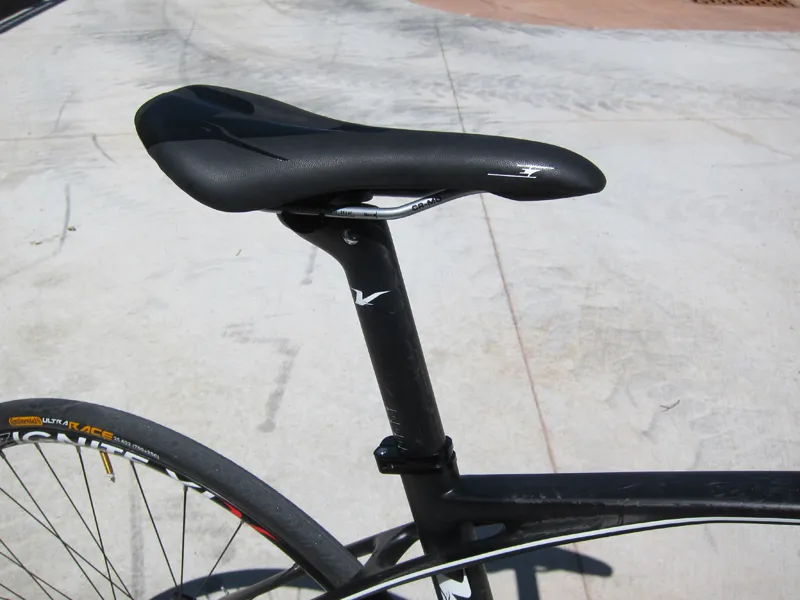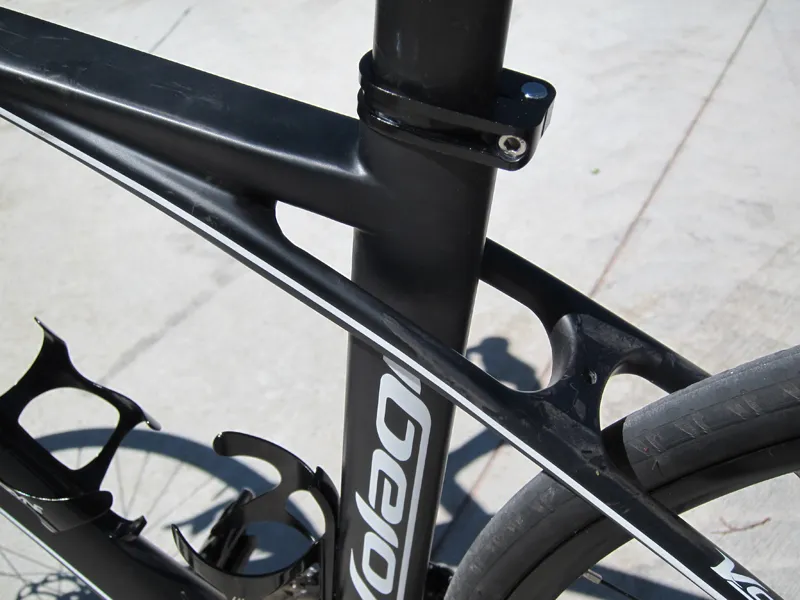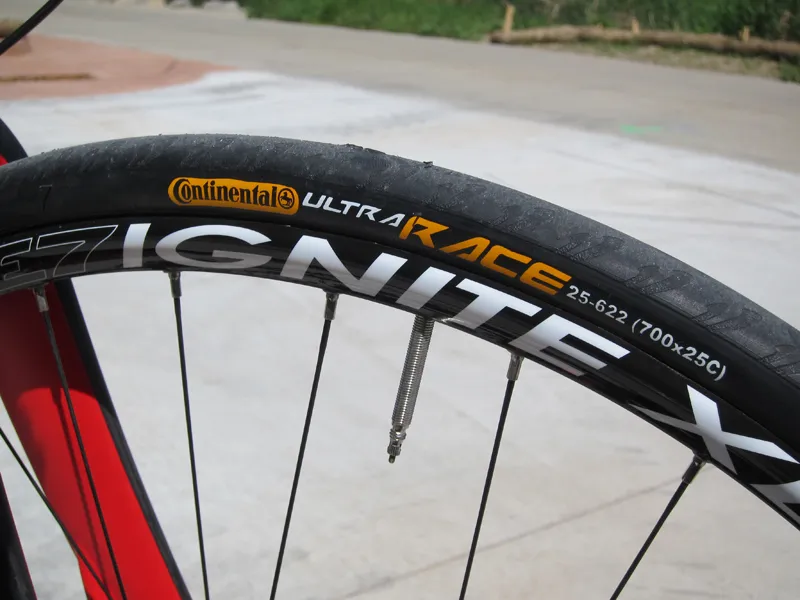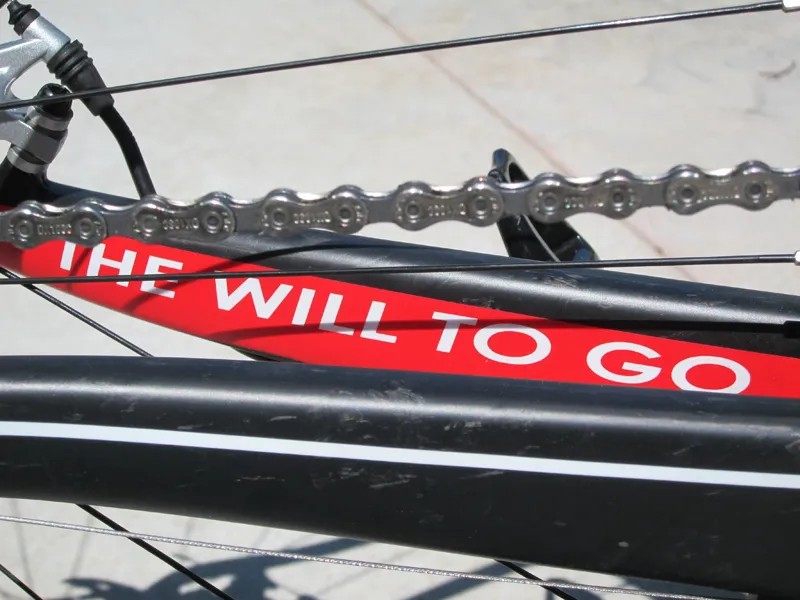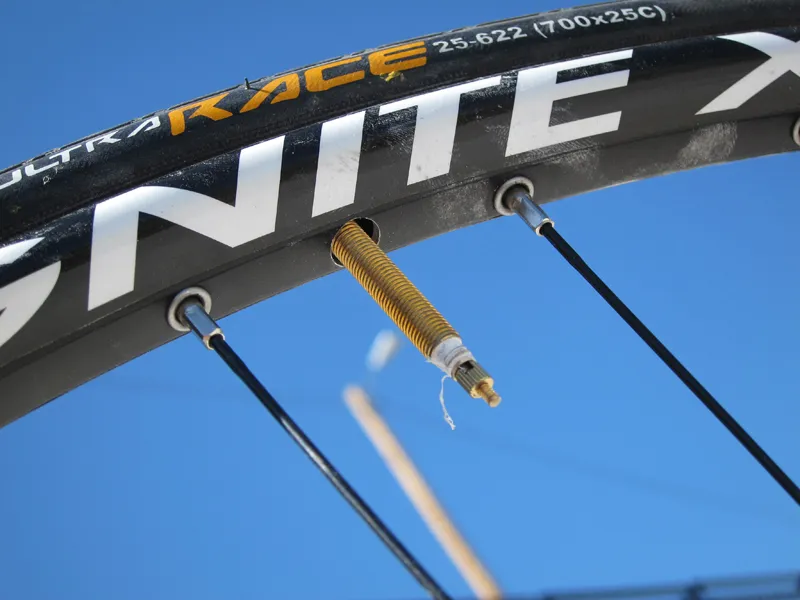At their most basic level, road bikes only have to perform a very limited set of tasks: accelerate, roll along, turn and stop. Most companies focus primarily on the first three attributes and the metrics that affect them (stiffness, weight, geometry, ride quality) but upstart outfit Volagi have pushed the boundaries a bit further by including disc brakes on their Liscio endurance machine.
Are they necessary? Hardly. But after spending a few months on them, it's hard to go back to the status quo. That Volagi have managed to integrate them into a satisfying all-day road cruiser that's perfectly suited to how most roadies actually ride is all the more impressive. In all likelihood, you're only going to see more of this sort of rig in the years ahead.
Ride & handling: Solid marks on the frameset but it's all about the brakes
We don't normally concentrate on one particular component in a complete bike review but in the case of the Volagi Liscio, it's impossible not to focus on the one major difference it has over its rivals. Simply put, the Avid BB7 road brakes are flat-out brilliant as compared to conventional rim brakes – but not in the sense of absolute power, as most people assume.
No, the main advantage is modulation of that power. Once we got used to the bike's heightened capabilities, we approached tricky downhill corners faster than with just about any other road brake we've used, confident with the knowledge that we could reliably scrub a precise amount of speed with fingertip control. Ultimate stopping power is largely a function of a tire's grip on the road but with the Liscio's discs, it's far easier to extract all of that power without fear of crossing the threshold into dangerous lock-up.
In fact, locking up even the rear wheel proved surprisingly difficult to do. Stopping power builds in such a linear and predictable fashion that you have to violently slam the rear lever all the way to the bar while simultaneously shifting your weight forward to initiate a skid – and yet stopping distances from any speed are still surprisingly short and repeatable.
Riders living in mountainous regions will also find solace in the Liscio brakes' greater heat capacity than rim brakes. Whereas extended brake application and the resultant heat build-up in clincher or tubular rims can produce a dangerous blowout or rolled tire, you can drag the BB7 to your heart's content with little consequence.
One of our test rides included dragging just the rear brake down a 1.6km-long (one mile) descent with a steady -5% gradient so as to maintain a constant 40km/h (25mph) speed under a 70kg (155lb) rider. Not only was there no fade from start to finish but we were still able to make an abrupt panic-like stop at the end of the run with just a hot rear rotor (that quickly cooled) and some tangible pad wear to show for it.
Thankfully for Volagi, the Liscio isn't only about slowing down; it's proven to be a satisfying all-day cruiser, too. The carbon frame is reasonably lightweight at 1,170g (53cm size) and the relatively long head tube puts the rider in a comfortable, "eyes-up" position well suited for gobbling up miles. Overall frame and drivetrain stiffness is about average for a mid-range carbon bike. Naturally, the Liscio is heavier than an equivalent rim brake-equipped machine so buyers shouldn't expect lightning-quick reflexes for their local weekend crit – but that's not really the Liscio's intended market.
What Volagi do promise is an ultra-smooth ride courtesy of the Liscio's novel LongBow seatstays, whose flattened shape arcs past the seat tube and joins directly to the top tube for more rear-end flex. Unfortunately, we didn't quite find it to deliver. Ride quality is very good but not the picture of creamy goodness we expected and the seemingly thick tube walls don't lend themselves to a particularly lively feel. It's far from uncomfortable but not that far off from average, either.
Handling is about what you'd expect from a bike with the relatively slack angles, tall front end and long wheelbase typical for this category. Straight-line stability is outstanding – even more so as speeds increase – and the Liscio happily motors along without needing constant attention like more nervous crit bikes. Turn-in requires a touch more conviction but once you've got it laid over, the Liscio carves corners with aplomb, aided by the stock 25mm-wide tires mounted on wide-profile rims.
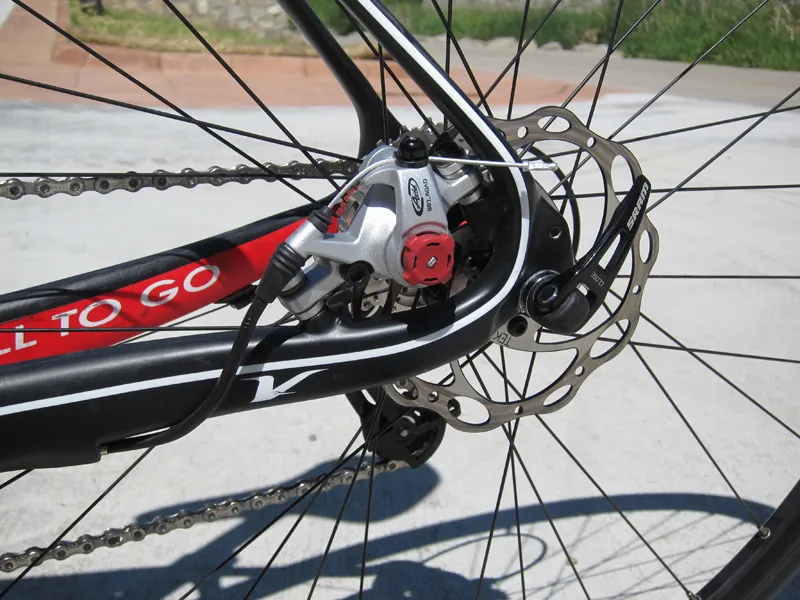
The rear Avid BB7 disc caliper is neatly tucked inside the rear triangle for a cleaner look and Volagi wisely downsize to a 140mm rotor
Frame: Curvaceous lines and a clean look
Volagi's website lists two different Liscio frames, with our entry-level Rival model using 24-ton carbon fiber and the other using a stiffer 24/30-ton blend, but feel free to ignore that. Our sample bore a "24/30t" decal on the seat tube and according to company co-founder Robert Choi, all of the Liscio frames are now identical.
Disc brakes and the previously mentioned LongBow seatstays aside, the VolagiLiscio frame is fairly standard stuff, with its modular monocoque carbon fiber construction, tapered 1-1/8 to 1-3/8in head tube, carbon dropouts, and true BB30 bonded-in aluminum bottom bracket sleeve. Actual weight for our 53cm sample is 1,170g (with seatpost collar, rear derailleur hanger and water bottle bolts) plus another 430g for the matching all-carbon fork.
Volagi make mention of the frame's nominally aero tube shapes but while there might be some measurable benefit to the teardrop-profile down tube, seat tube and seatpost, as usual it isn't detectable from the saddle. Aero might be all the buzz right now but given the bike's intended user, we feel the frame would be better served by more conventional and thinner-walled pipes that might lend a more refined ride quality instead.
Volagi have done a good job of incorporating a lot of versatility, however, with full fender mounts plus removable hardware in case you want to run conventional rim brakes. The disc configuration yields a clean appearance, with internally routed brake lines that are also fully guided for easy servicing. We don't completely agree with where Volagi have chosen to put the entry and exit points – housing length is critical and you first have to disconnect the lines to get a proper caliper setup – but the idea is nice.
Much as we love the idea of disc brakes on the road, what's yet to be determined long-term is the rear hub spacing. Volagi have decided to stick with the standard 130mm dimension but insider rumblings suggest the industry will ultimately settle on the current 135mm disc hub standard instead. Whether or not this poses an issue for early adopters remains to be seen but it's definitely something to keep in mind.
Equipment: High-value Rival group plus intriguing Ignite wide-profile clinchers
Volagi offer the Liscio with higher-end Shimano Ultegra and Dura-Ace mechanical groups but the entry-level SRAM Rival version looks to provide the best value at US$2,895. Rival provides impressively close shifting performance to the top-end Red group but with just a touch more weight and slightly longer lever throws – neither of which should bother most casual riders.
Standard builds include a wide-range SRAM cassette, KMC chain and FSA Gossamer BB30 crank, but our tester came with an Ultegra cassette and SL-K BB30 crankset – the latter of which is available as an upgrade for US$300. Riders concerned about weight can drop around 150g that way but the Gossamer is a perfectly functional unit. Total weight for our slightly upgraded test sample was 7.84kg (17.28lb) without pedals.
FSA also provide the standard build's OS-150 stem (ours came with an OS-99 but there are no major functional differences aside from weight) and comfy Wing Pro bar, whose short reach and compact bend were well suited to the Liscio's intended use. The standout line item for us, however, was the E7 Ignite XL wheels, which aren't light at 1,840g per pair but like the frame, are similarly progressive in design with a very wide – but shallow – rim profile that emphasizes ride quality.
Aero it's not, but the broader foundation blends perfectly with the stock 25mm tires to provide confident traction in corners plus a less jarring ride than more typical 23s. There's noticeable lateral flex in hard corners that we expected given the narrow flange spacing but it wasn't nearly as bad as we'd expected – perhaps tempered by the wide rim's extra stiffness. Our wheels did go slightly out of true during testing, though.
Overall: Great choice for mountainous or wet regions
Skeptics will undoubtedly point out that disc brakes add weight to road bikes and at least for now, that's true – but not to the vast degree that some are claiming. Regardless, riders living in hillier or consistently wetter areas will still benefit from the Liscio's far more controllable, consistent and safer stoppers and the bike overall is good enough that the brakes aren't just a standalone gimmick. We've heard the arguments before – remember V-brakes? – but read our lips: this is just the beginning.
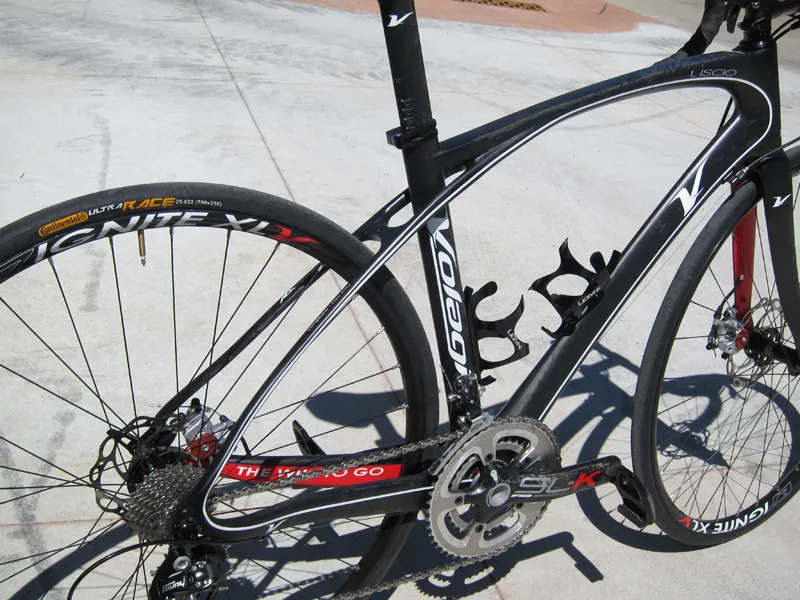
Volagi say the extended Long Bow seatstays lend more vertical flex than conventional designs for a more comfortable ride. Sounds good in theory and the overall ride quality is indeed pretty smooth but it wasn't quite the buttery glide we were expecting
